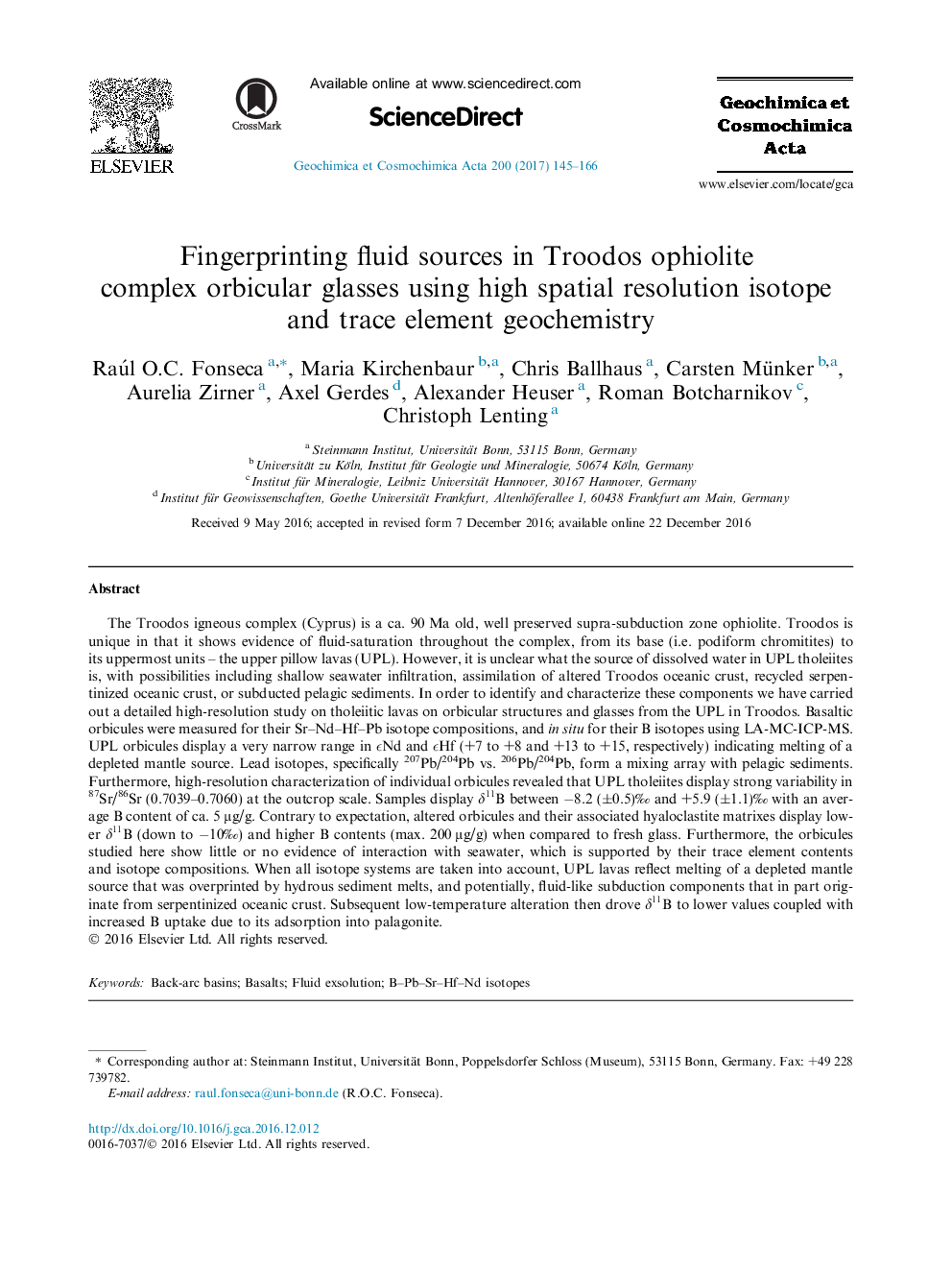| کد مقاله | کد نشریه | سال انتشار | مقاله انگلیسی | نسخه تمام متن |
|---|---|---|---|---|
| 5783569 | 1637957 | 2017 | 22 صفحه PDF | دانلود رایگان |
The Troodos igneous complex (Cyprus) is a ca. 90 Ma old, well preserved supra-subduction zone ophiolite. Troodos is unique in that it shows evidence of fluid-saturation throughout the complex, from its base (i.e. podiform chromitites) to its uppermost units - the upper pillow lavas (UPL). However, it is unclear what the source of dissolved water in UPL tholeiites is, with possibilities including shallow seawater infiltration, assimilation of altered Troodos oceanic crust, recycled serpentinized oceanic crust, or subducted pelagic sediments. In order to identify and characterize these components we have carried out a detailed high-resolution study on tholeiitic lavas on orbicular structures and glasses from the UPL in Troodos. Basaltic orbicules were measured for their Sr-Nd-Hf-Pb isotope compositions, and in situ for their B isotopes using LA-MC-ICP-MS. UPL orbicules display a very narrow range in âNd and âHf (+7 to +8 and +13 to +15, respectively) indicating melting of a depleted mantle source. Lead isotopes, specifically 207Pb/204Pb vs. 206Pb/204Pb, form a mixing array with pelagic sediments. Furthermore, high-resolution characterization of individual orbicules revealed that UPL tholeiites display strong variability in 87Sr/86Sr (0.7039-0.7060) at the outcrop scale. Samples display δ11B between â8.2 (±0.5)â° and +5.9 (±1.1)â° with an average B content of ca. 5 μg/g. Contrary to expectation, altered orbicules and their associated hyaloclastite matrixes display lower δ11B (down to â10â°) and higher B contents (max. 200 μg/g) when compared to fresh glass. Furthermore, the orbicules studied here show little or no evidence of interaction with seawater, which is supported by their trace element contents and isotope compositions. When all isotope systems are taken into account, UPL lavas reflect melting of a depleted mantle source that was overprinted by hydrous sediment melts, and potentially, fluid-like subduction components that in part originate from serpentinized oceanic crust. Subsequent low-temperature alteration then drove δ11B to lower values coupled with increased B uptake due to its adsorption into palagonite.
Journal: Geochimica et Cosmochimica Acta - Volume 200, 1 March 2017, Pages 145-166
